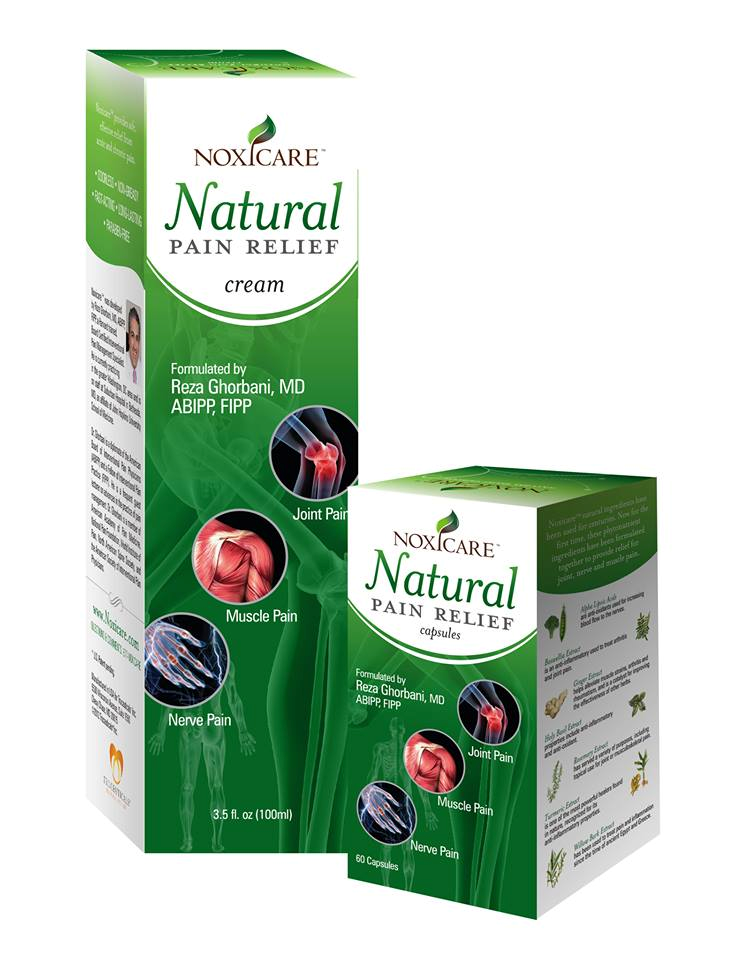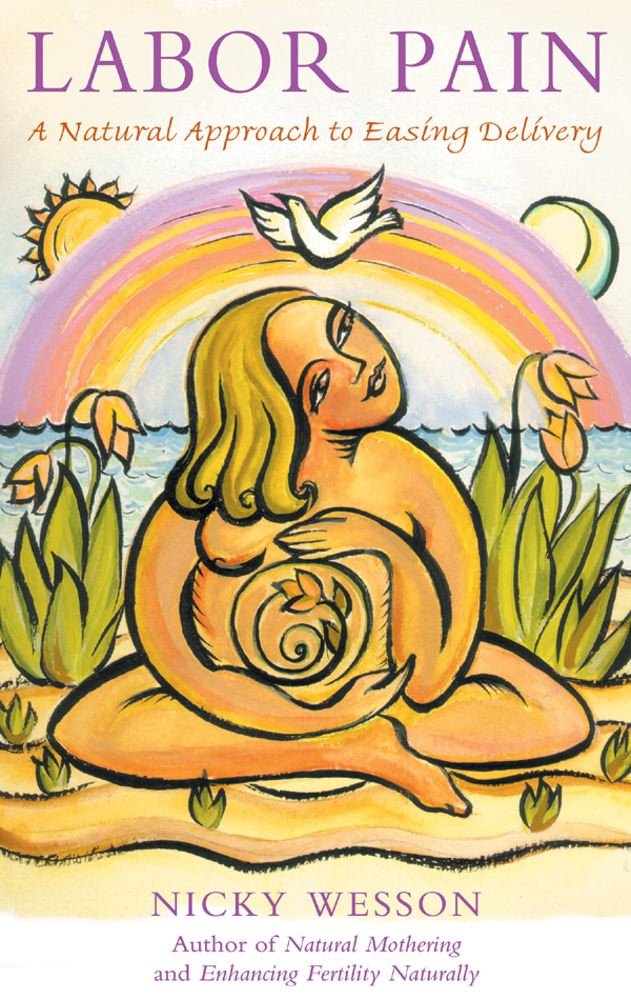Pain management (also called pain medicine or algiatry) is a branch of medicine employing an interdisciplinary approach for easing the suffering and improving the quality of life of those living with pain. The typical pain management team includes medical practitioners, pharmacists, clinical psychologists, physiotherapists, occupational therapists, physician assistants, nurse practitioners, and clinical nurse specialists. The team may also include other mental-health specialists and massage therapists. Pain sometimes resolves promptly once the underlying trauma or pathology has healed, and is treated by one practitioner, with drugs such as analgesics and (occasionally) anxiolytics. Effective management of chronic (long-term) pain, however, frequently requires the coordinated efforts of the management team.
Medicine treats injury and pathology to support and speed healing; and treats distressing symptoms such as pain to relieve suffering during treatment and healing. When a painful injury or pathology is resistant to treatment and persists, when pain persists after the injury or pathology has healed, and when medical science cannot identify the cause of pain, the task of medicine is to relieve suffering. Treatment approaches to chronic pain include pharmacological measures, such as analgesics, tricyclic antidepressants and anticonvulsants, interventional procedures, physical therapy, physical exercise, application of ice and/or heat, and psychological measures, such as biofeedback and cognitive behavioral therapy.

Medical specialties
Pain can either be managed using pharmacological or interventional procedures. There are many interventional procedures available for pain. Interventional procedures - typically used for chronic back pain - include epidural steroid injections, facet joint injections, neurolytic blocks, spinal cord stimulators and intrathecal drug delivery system implants.
Pain management practitioners come from all fields of medicine. In addition to medical practitioners, a pain management team may often benefit from the input of pharmacists, physiotherapists, clinical psychologists and occupational therapists, among others. Together the multidisciplinary team can help create a package of care suitable to the patient.
Pain physicians are often fellowship-trained board-certified anesthesiologists, neurologists, physiatrists or psychiatrists. Palliative care doctors are also specialists in pain management. The American Board of Anesthesiology, the American Osteopathic Board of Anesthesiology (recognized by the AOABOS), the American Board of Physical Medicine and Rehabilitation, and the American Board of Psychiatry and Neurology each provide certification for a subspecialty in pain management following fellowship training which is recognized by the American Board of Medical Specialties (ABMS) or the American Osteopathic Association Bureau of Osteopathic Specialists (AOABOS). As the field of pain medicine has grown rapidly, many practitioners have entered the field, some none-ACGME board-certified.
Pain Relief Natural Video
Pain Management Certification through ABPM and ABIPP
Practitioners that are interested in Pain Medicine and have not done the ACGME pain medicine fellowship, or do not wish to do the fellowship, can opt in for certification by the American Board of Pain Medicine(ABPM) or American Board of Interventional Pain Physicians(ABIPP) which require rigorous post residency/fellowship training, documentation, and exams with maintenance of certification for recognition. ABPM requires none ABMS pain medicine providers to complete at least 18 months of training(post ACGME graduation of residency), extensive documentation of interventions, such as procedural, behavioral, pharmaceutical, to qualify for a ABPM board exam, with recertification every 10 years and CME in-between those years. ABIPP requires non-ABMS pain medicine providers of at least 6 years of practice (post ACGME graduation of residency), extensive documentation of interventions, such as procedural, behavioral, pharmaceutical, 300 hours continuing education credit and 50 hours of cadaver workshop training to qualify; ABIPP is a two part exam (part 1 - Theoretical Examination and part 2 - Practical Examination).
These two boards are legally recognized in multiple states including U.S. Veterans Health Administration, the state of Alabama, the state of Florida, the state of California, the state of Georgia, the state of Kentucky, the state of Ohio, the state of Rhode Island, the state of Tennessee, the state of Texas, and the state of Washington.

Pain Management Certification through WIP
The World Institute of Pain (WIP), a worldwide organization founded in 1993, offers a fellowship program utilizing a global forum for education, training and networking to qualified physicians in the field of Pain Medicine. In 2001, the WIP and its FIPP Board of Exam introduced the Fellow of Interventional Pain Practice (FIPP), a physician certification program by the FIPP Board of Examination. According to WIP, the purpose of the fellowship is global advancement and standardization of interventional pain practice. Over eight-hundred physicians from fifty different countries have been FIPP certified.

Physical approach
Physical medicine and rehabilitation
Physical medicine and rehabilitation (physiatry/physiotherapy) employs diverse physical techniques such as thermal agents and electrotherapy, as well as therapeutic exercise and behavioral therapy, alone or in tandem with interventional techniques and conventional pharmacotherapy to treat pain, usually as part of an interdisciplinary or multidisciplinary program.
TENS
Transcutaneous electrical nerve stimulation has been found to be ineffective for lower back pain, however, it might help with diabetic neuropathy.
Acupuncture
Acupuncture involves the insertion and manipulation of needles into specific points on the body to relieve pain or for therapeutic purposes. An analysis of the 13 highest quality studies of pain treatment with acupuncture, published in January 2009 in the British Medical Journal, was unable to quantify the difference in the effect on pain of real, sham and no acupuncture.
Light therapy
Research has not found evidence that light therapy such as low level laser therapy is an effective therapy for relieving low back pain.

Psychological approach
Cognitive behavioral therapy
Cognitive behavioral therapy (CBT) for pain helps patients with pain to understand the relationship between one's physiology (e.g., pain and muscle tension), thoughts, emotions, and behaviors. A main goal in treatment is cognitive restructuring to encourage helpful thought patterns, targeting a behavioral activation of healthy activities such as regular exercise and pacing. Lifestyle changes are also trained to improve sleep patterns and to develop better coping skills for pain and other stressors using various techniques (e.g., relaxation, diaphragmatic breathing, and even biofeedback).
Studies have demonstrated the usefulness of cognitive behavioral therapy in the management of chronic low back pain, producing significant decreases in physical and psychosocial disability. A study published in the January 2012 issue of the Archives of Internal Medicine found CBT is significantly more effective than standard care in treatment of people with body-wide pain, like fibromyalgia. Evidence for the usefulness of CBT in the management of adult chronic pain is generally poorly understood, due partly to the proliferation of techniques of doubtful quality, and the poor quality of reporting in clinical trials. The crucial content of individual interventions has not been isolated and the important contextual elements, such as therapist training and development of treatment manuals, have not been determined. The widely varying nature of the resulting data makes useful systematic review and meta-analysis within the field very difficult.
In 2009 a systematic review of randomized controlled trials (RCTs) of psychological therapies for the management of adult chronic pain (excluding headache) found that "CBT and BT have weak effects in improving pain. CBT and BT have minimal effects on disability associated with chronic pain. CBT and BT are effective in altering mood outcomes, and there is some evidence that these changes are maintained at six months;" and a review of RCTs of psychological therapies for the management of chronic and recurrent pain in children and adolescents, by the same authors, found "Psychological treatments are effective in pain control for children with headache and benefits appear to be maintained. Psychological treatments may also improve pain control for children with musculoskeletal and recurrent abdominal pain. There is some evidence available to estimate effects on disability or mood."
Hypnosis
A 2007 review of 13 studies found evidence for the efficacy of hypnosis in the reduction of pain in some conditions, though the number of patients enrolled in the studies was small, bringing up issues of power to detect group differences, and most lacked credible controls for placebo and/or expectation. The authors concluded that "although the findings provide support for the general applicability of hypnosis in the treatment of chronic pain, considerably more research will be needed to fully determine the effects of hypnosis for different chronic-pain conditions."
Hypnosis has reduced the pain of some noxious medical procedures in children and adolescents, and in clinical trials addressing other patient groups it has significantly reduced pain compared to no treatment or some other non-hypnotic interventions. However, no studies have compared hypnosis to a convincing placebo, so the pain reduction may be due to patient expectation (the "placebo effect"). The effects of self hypnosis on chronic pain are roughly comparable to those of progressive muscle relaxation.
Mindfulness Meditation
A meta-analysis of studies that used techniques centered around the concept of mindfulness, concluded, "Findings suggest that MBIs decrease the intensity of pain for chronic pain patients."

Medications
The World Health Organization (WHO) recommends a pain ladder for managing analgesia. It was first described for use in cancer pain, but it can be used by medical professionals as a general principle when dealing with analgesia for any type of pain. In the treatment of chronic pain, whether due to malignant or benign processes, the three-step WHO Analgesic Ladder provides guidelines for selecting the kind and stepping up the amount of analgesia. The exact medications recommended will vary with the country and the individual treatment center, but the following gives an example of the WHO approach to treating chronic pain with medications. If, at any point, treatment fails to provide adequate pain relief, then the doctor and patient move onto the next step.
Mild pain
Paracetamol (acetaminophen), or a non steroidal anti-inflammatory drug (NSAID) such as ibuprofen.
Mild to moderate pain
Paracetamol, an NSAID and/or paracetamol in a combination product with a weak opioid such as tramadol, may provide greater relief than their separate use. Also a combination of opioid with acetaminophen can be frequently used such as Percocet, Vicodin, or Norco.
Moderate to severe pain
When treating moderate to severe pain, the type of the pain, acute or chronic, needs to be considered. The type of pain can result in different medications being prescribed. Certain medications may work better for acute pain, others for chronic pain, and some may work equally well on both. Acute pain medication is for rapid onset of pain such as from an inflicted trauma or to treat post-operative pain. Chronic pain medication is for alleviating long-lasting, ongoing pain.
Morphine is the gold standard to which all narcotics are compared. Fentanyl has the benefit of less histamine release and thus fewer side effects. It can also be administered via transdermal patch which is convenient for chronic pain management. In addition to the intrathecal patch and injectable Sublimaze, the FDA has approved various immediate release fentanyl products for breakthrough cancer pain (Actiq/OTFC/Fentora/Onsolis/Subsys/Lazanda/Abstral). Oxycodone is used across the Americas and Europe for relief of serious chronic pain; its main slow-release formula is known as OxyContin, and short-acting tablets, capsules, syrups and ampules are available making it suitable for acute intractable pain or breakthrough pain. Diamorphine, methadone and buprenorphine are used less frequently. Pethidine, known in North America as meperidine, is not recommended for pain management due to its low potency, short duration of action, and toxicity associated with repeated use. Pentazocine, dextromoramide and dipipanone are also not recommended in new patients except for acute pain where other analgesics are not tolerated or are inappropriate, for pharmacological and misuse-related reasons. Amitriptyline is prescribed for chronic muscular pain in the arms, legs, neck and lower back. While opiates are often used in the management of chronic pain, high doses are associated with an increased risk of opioid overdose.
Opioids
Opioid medications can provide short, intermediate or long acting analgesia depending upon the specific properties of the medication and whether it is formulated as an extended release drug. Opioid medications may be administered orally, by injection, via nasal mucosa or oral mucosa, rectally, transdermally, intravenously, epidurally and intrathecally. In chronic pain conditions that are opioid responsive a combination of a long-acting (OxyContin, MS Contin, Opana ER, Exalgo and Methadone) or extended release medication is often prescribed in conjunction with a shorter-acting medication (oxycodone, morphine or hydromorphone) for breakthrough pain, or exacerbations.
Most opioid treatment used by patients outside of healthcare settings is oral (tablet, capsule or liquid), but suppositories and skin patches can be prescribed. An opioid injection is rarely needed for patients with chronic pain.
Although opioids are strong analgesics, they do not provide complete analgesia regardless of whether the pain is acute or chronic in origin. Opioids are efficacious analgesics in chronic malignant pain and modestly effective in nonmalignant pain management. However, there are associated adverse effects, especially during the commencement or change in dose. When opioids are used for prolonged periods drug tolerance, chemical dependency, diversion and addiction may occur.
Clinical guidelines for prescribing opioids for chronic pain have been issued by the American Pain Society and the American Academy of Pain Medicine. Included in these guidelines is the importance of assessing the patient for the risk of substance abuse, misuse, or addiction; a personal or family history of substance abuse is the strongest predictor of aberrant drug-taking behavior. Physicians who prescribe opioids should integrate this treatment with any psychotherapeutic intervention the patient may be receiving. The guidelines also recommend monitoring not only the pain but also the level of functioning and the achievement of therapeutic goals. The prescribing physician should be suspicious of abuse when a patient reports a reduction in pain but has no accompanying improvement in function or progress in achieving identified goals.
Commonly-used long-acting opioids and their parent compound:
- OxyContin (oxycodone)
- Hydromorph Contin (hydromorphone)
- MS Contin (morphine)
- M-Eslon (morphine)
- Exalgo (hydromorphone)
- Opana ER (oxymorphone)
- Duragesic (fentanyl)
- Nucynta ER (tapentadol)
- Metadol/Methadose (methadone)*
- Zohydro ER (hydrocodone bicarbonate)
*Methadone can be used for either treatment of opioid addiction/detoxification when taken once daily or as a pain medication usually administered on an every 12-hour or 8-hour dosing interval.
Non-steroidal anti-inflammatory drugs
The other major group of analgesics are non-steroidal anti-inflammatory drugs (NSAID). Acetaminophen/paracetamol is not always included in this class of medications. However, acetaminophen may be administered as a single medication or in combination with other analgesics (both NSAIDs and opioids). The alternatively prescribed NSAIDs such as ketoprofen and piroxicam have limited benefit in chronic pain disorders and with long-term use are associated with significant adverse effects. The use of selective NSAIDs designated as selective COX-2 inhibitors have significant cardiovascular and cerebrovascular risks which have limited their utilization.
Antidepressants and antiepileptic drugs
Some antidepressant and antiepileptic drugs are used in chronic pain management and act primarily within the pain pathways of the central nervous system, though peripheral mechanisms have been attributed as well. These mechanisms vary and in general are more effective in neuropathic pain disorders as well as complex regional pain syndrome. Drugs such as gabapentin have been widely prescribed for the off-label use of pain control. The list of side effects for these classes of drugs are typically much longer than opiate or NSAID treatments for chronic pain, and many antiepileptics cannot be suddenly stopped without the risk of seizure.
Cannabinoids
Chronic pain is one of the most commonly cited reasons for the use of medical marijuana. A 2012 Canadian survey of participants in their medical marijuana program found that 84% of respondents reported using medical marijuana for the management of pain.
Evidence of medical marijuana's pain mitigating effects is generally conclusive. Detailed in a 1999 report by The Institute of Medicine, "the available evidence from animal and human studies indicates that cannabinoids can have a substantial analgesic effect." In a 2013 review study published in Fundamental & Clinical Pharmacology, various studies were cited in demonstrating that cannabinoids exhibit comparable effectiveness to opioids in models of acute pain and even greater effectiveness in models of chronic pain.
Other analgesics
Other drugs are often used to help analgesics combat various types of pain, and parts of the overall pain experience, and are hence called adjuvant medications. Gabapentin -- an anti-epileptic -- not only exerts effects alone on neuropathic pain, but can potentiate opiates. While perhaps not prescribed as such, other drugs such as Tagamet (cimetidine) and even simple grapefruit juice may also potentiate opiates, by inhibiting CYP450 enzymes in the liver, thereby slowing metabolism of the drug. In addition, orphenadrine, cyclobenzaprine, trazodone and other drugs with anticholinergic properties are useful in conjunction with opioids for neuropathic pain. Orphenadrine and cyclobenzaprine are also muscle relaxants, and therefore particularly useful in painful musculoskeletal conditions. Clonidine has found use as an analgesic for this same purpose, and all of the mentioned drugs potentiate the effects of opioids overall.

Interventional procedures
Pulsed radiofrequency, neuromodulation, direct introduction of medication and nerve ablation may be used to target either the tissue structures and organ/systems responsible for persistent nociception or the nociceptors from the structures implicated as the source of chronic pain.
An intrathecal pump used to deliver very small quantities of medications directly to the spinal fluid. This is similar to epidural infusions used in labour and postoperatively. The major differences are that it is much more common for the drug to be delivered into the spinal fluid (intrathecal) rather than epidurally, and the pump can be fully implanted under the skin. Interestingly, it is suggested this approach allows a smaller dose of the drug to be delivered directly to the site of action, with fewer systemic side effects, which is thus therapeutically questionable due to the fact that the three main opioid receptors; chiefly the [?-,?-,and ? (Mu-,Kappa-, and Delta- respectively] are limited in their anatomical locations. The 3 main receptors are found dominantly within the brain, CNS and Digestive tract.
A spinal cord stimulator is an implantable medical device that creates electric impulses and applies them near the dorsal surface of the spinal cord provides a paresthesia ("tingling") sensation that alters the perception of pain by the patient.

Undertreatment
Undertreatment of pain is common, and is experienced by all age groups from neonates to the elderly.
In the United States, women and Hispanic and African Americans are more likely to be undertreated.
In September 2008, the World Health Organization (WHO) estimated that approximately 80 percent of the world population has either no or insufficient access to treatment for moderate to severe pain. Every year tens of millions of people around the world, including around four million cancer patients and 0.8 million HIV/AIDS patients at the end of their lives suffer from such pain without treatment. Yet the medications to treat pain are cheap, safe, effective, generally straightforward to administer, and international law obliges countries to make adequate pain medications available.
Reasons for deficiencies in pain management include cultural, societal, religious, and political attitudes, including acceptance of torture. Moreover, the biomedical model of disease, focused on pathophysiology rather than quality of life, reinforces entrenched attitudes that marginalize pain management as a priority. Other reasons may have to do with inadequate training, personal biases or fear of prescription drug abuse.
Undertreatment in the elderly can be due to a variety of reasons including the misconception that pain is a normal part of aging, therefore it is unrealistic to expect older adults to be pain free. Other misconceptions surrounding pain and older adults are that older adults have decreased pain sensitivity, especially if they have a cognitive dysfunction such as dementia and that opioids should not be administered to older adults as they are too dangerous. However, with appropriate assessment and careful administration and monitoring older adults can have to same level of pain management as any other population of care.
Undertreatment may be due to physicians' fear of being accused of over-prescribing (see for instance the case of Dr William Hurwitz), despite the relative rarity of prosecutions, or physicians' poor understanding of the health risks attached to opioid prescription As a result of two recent cases in California though, where physicians who failed to provide adequate pain relief were successfully sued for elder abuse, the North American medical and health care communities appear to be undergoing a shift in perspective. The California Medical Board publicly reprimanded the physician in the second case; the federal Center for Medicare and Medicaid Services has declared a willingness to charge with fraud health care providers who accept payment for providing adequate pain relief while failing to do so; and clinical practice guidelines and standards are evolving into clear, unambiguous statements on acceptable pain management, so health care providers, in California at least, can no longer avoid culpability by claiming that poor or no pain relief meets community standards.
Current strategies for improvement in pain management include framing it as an ethical issue; promoting pain management as a legal right; providing constitutional guarantees and statutory regulations that span negligence law, criminal law, and elder abuse; defining pain management as a fundamental human right; categorizing failure to provide pain management as professional misconduct, and issuing guidelines and standards of practice by professional bodies.
In children
Acute pain is common in children and adolescents as a result of injury, illness, or necessary medical procedures. Chronic pain is present in approximately 15-25% of children and adolescents, and may be caused by an underlying disease, such as sickle cell anemia, cystic fibrosis, rheumatoid arthritis, or cancer or by functional disorders such as migraines, fibromyalgia, or complex regional pain.
Assessment
Pain assessment in children is often challenging due to limitations in developmental level, cognitive ability, or their previous pain experiences. Clinicians must observe physiological and behavioral cues exhibited by the child to make an assessment. Self-report, if possible, is the most accurate measure of pain; self-report pain scales developed for young children involve matching their pain intensity to photographs of other children's faces, such as the Oucher Scale, pointing to schematics of faces showing different pain levels, or pointing out the location of pain on a body outline. Questionnaires for older children and adolescents include the Varni-Thompson Pediatric Pain Questionnaire (PPQ) and the Children's Comprehensive Pain Questionnaire, which are often utilized for individuals with chronic or persistent pain.
Nonpharmacologic
Caregivers may provide nonpharmacological treatment for children and adolescents because it carries minimal risk and is cost effective compared to pharmacological treatment. Nonpharmacologic interventions vary by age and developmental factors. Physical interventions to ease pain in infants include swaddling, rocking, or sucrose via a pacifier, whereas those for children and adolescents include hot or cold application, massage, or acupuncture. Cognitive behavioral therapy (CBT) aims to reduce the emotional distress and improve the daily functioning of school-aged children and adolescents with pain through focus on changing the relationship between their thoughts and emotions in addition to teaching them adaptive coping strategies. Integrated interventions in CBT include relaxation technique, mindfulness, biofeedback, and acceptance (in the case of chronic pain). Many therapists will hold sessions for caregivers to provide them with effective management strategies.
Pharmacologic
Acetaminophen, nonsteroidal anti-inflammatory agents, and opioid analgesics are commonly used to treat acute or chronic pain symptoms in children and adolescents, but a pediatrician should be consulted before administering any medication.
Are You Looking for Products
Here some products related to "Pain Management".
Rub on Relief®- $0.99 â‹..
Labor Pain: A Natural App..
Little Remedies Honey Pop..
Super Maxx Heat Pain Reli..
Get these at Amazon.com* amzn.to is official short URL for Amazon.com, provided by Bitly
Source of the article : here






EmoticonEmoticon